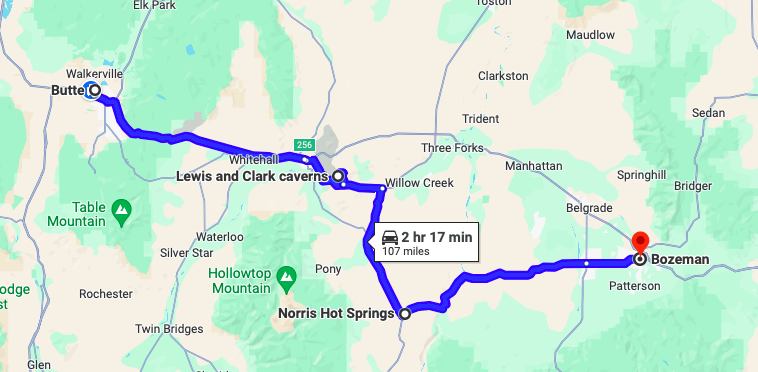One of the biggest impediments to travel is cost. Even though B and I have talked about how we don’t spend as much as you would think on our trips, travel still costs more money than staying at home. One way to keep travel costs down is to take advantage of points and mileage that various credit card companies offer when you get one of their cards. We are not experts, but this post will talk about a few of the travel credit cards that we have and offer some advice on booking travel with rewards points. And if you are looking to save some money, we wrote a post with 10 suggestions for how to save money while traveling.
How this Works
To get people to sign up for credit cards (and make money off of them through interest on balances, greedy grubbers), credit card companies offer ‘bonus’ rewards. When you are approved for a card and spend a set amount during a time period, typically $3,000 or $4,000 during three months, the credit card company will release the promised bonus. These bonuses can be an excellent way to earn miles/points for future travel. The bonus amount varies from company to company and a few times during the year, one or two cards will offer a ridiculous amount of rewards.
Be strategic
The catch from these bonus rewards (apart from the risk of running up a debt on your credit card) is that some cards come with annual fees, which are usually waived the first year. Once you have your bonus rewards, some companies allow you to redeem them easier than others. Highly disciplined credit card users will sign up for the cards, receive the bonuses and then cancel the cards before they are required to pay the annual fee. This can be a lucrative strategy, but might not work all of the time if the credit card companies catch on. I know one person with excellent credit who was denied one of the cards below because he had opened and closed too many credit cards within the previous year.
What Cards we Have and Can Recommend
*Credit Cards particulars can change. The following is what is current when this post was written.

Delta Skymiles American Express
Delta offers some of the biggest rewards when it comes to new card member bonuses. I currently have the Platinum version of this card and when I opened it, I received 60,000 SkyMiles.
Pros:
- 60,000 SkyMiles is a hefty amount. In past years, I frequently flew to Seattle from Boise and was able to use my SkyMiles on Delta’s partner Alaska Airlines (they have since dissolved this option) and a round trip ticket would be between 10,000-12,500 miles.
- When you fly Delta, you will get to board in Zone 1, which always makes me feel cool and slightly superior to the poor suckers in Zone 5.
- You can check a bag for free. We all know how annoying it is to pay for checking a bag, but to be honest, I’ve only taken advantage of this a few times. Most international flights allow you to check for free and I typically carry on domestic flights.
- Each year (AFTER, the first year) cardholders get a companion certificate fare, so you book a flight and your buddy (B, where you at?) gets to fly with.
Cons:
- The annual fee is a $195. This is on the higher end and you only get the companion fare after you’ve paid the annual fee for two years. So if you can make sure your first companion fare is over $400 and subsequent are over $200, this card is worth the cost.
Chase Reserve Visa
This card makes me feel like a baller. It is thick metal and just feels so good to hold in my hand. I was also approved for a high credit limit, which I thought was high until the bank lady told me that was one of the lower ones she’d seen with this card. Oh. Anyway, Chase was having a crazy promotion for this card and I received 100,000 miles for applying.
Pros:
- 100,000 miles is a lot of miles. And if you use them on travel, you get 50% more miles. So basically, I earned $1,500 in free travel just by applying for this card.
- $300 travel reimbursement annually. This means my first $300 dollars I spend on travel (e.g. airplane tickets, hotels, rental cars, etc.), magically disappears from my credit card bill.
- Free Global Entry. B and I already have this and paid the $85 for it. However, if I still have my card in three years when my Global Entry expires, this card will reimburse that charge.
- Priority Access Lounge Membership. Along with this card, you get a membership to the Priority Access Card. This means when you are at airports with lounges that are members with Priority Access, you and one guest get to go to that lounge for free. I hadn’t really been to an airport lounge before I got this card, but I gotta tell you, I LOVE doing it now. Lounges have free WiFi and free food and sometimes private bathrooms. It’s awesome. And some airports have restaurants that are members. For example, when I was flying through the Denver airport last month, I flashed my card at a restaurant and got free breakfast, up to $27. Sweet, right?
- 3X points on travel purchases. I actually forgot about this until I was researching for this post. This means that I should be using this card on all travel purchases because 3X the points is better than I get with my other cards.
Cons:
- The annual fee for this card is as heavy as the card is: $450. But before you balk at that, you can automatically subtract $300 because I burn through that in travel in the first few months out of the year.
United
B has this card. It seems pretty similar to the Delta card with airline specific perks. She received 60,000 miles bonus for signing on.
Pros:
- That’s a good amount of miles for signing on. We are currently planning our next international trip and it would cover B’s entire flight—from Boise. That’s crazy talk.
- Priority boarding.
- Free checked bag on domestic flights.
- 2X miles purchased on United.com.
- Two free airline lounge passes per year. If you were to just pay for a lounge pass, it would be about $30-ish dollars to get in, depending on the airport.
No foreign transaction fees. This came in real handy in both Australia and the Azores. - Exclusive offers. While searching for airfare recently, B found some really good deals on flights that were “exclusive for card members.”
Cons:
- The annual membership is $95. If you checked your bags four times, this would cover this annual membership.
What Now?
So you have your card, now what do you do with all of those points? You know that phrase, the more you put into something, the more you get out of it? Well, that’s true with miles and points. If you do a lot of digging and research, you can really get a lot out of your points. I’m usually not that patient/dedicated, so I use the easy way and probably don’t get as much out of them as I could–but still plenty to make this whole thing worth it to me.
How to use the rewards
To book with miles using your miles, you can go to the specific airline’s website and select ‘Miles’ or ‘Rewards’ on your flight search. The results pop up with how many miles you need to spend and then you just reserve the flight like you would normally do, selecting the flight and putting in all of your info.
To book with points, you go to the credit card’s travel website and search for travel just like you would on Expedia or the like. The results will tell you how many points you are using; on Chase’s site, you can actually slide a little scale and it shows you a combination of points/dollars it would take to book that travel.
You can do it!
It used to be more challenging to book rewards travel, but it is actually pretty easy these days. I’m sure some of the flights don’t show up, but my experience has been pretty positive when I have used my points and miles. And the idea of booking travel for free makes the whole process that much more exciting.

Maximizing Your Rewards
There are several websites dedicated to ways people can travel for free. I like NerdWallet to do a comparison of credit card benefits. ThePointsGuy is all about using your points in the most beneficial way (think booking flights using your miles with airline’s partner websites). B went to a whole class that taught people how to use credit card points to travel for free. Really, if you want to put a lot of time into it, there are lots of opportunities to make the most of your rewards.
Conclusion
Travel is awesome. Traveling for free is even more awesome. As long as you are smart about it and logically weigh the costs/benefits for credit card offers, you can save a lot of money booking travel using rewards.
Update: after writing this post B and I both cashed in 60K miles (she on United and me on Delta) for a trip next year. A similar trip from Boise would have cost us around $1,000 each.





Leave a Reply